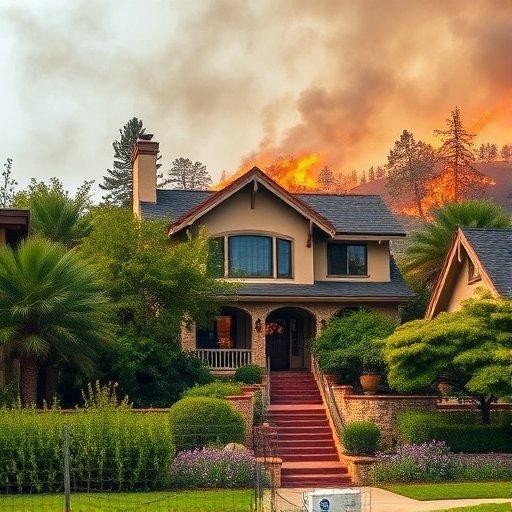=- Artificial News for Artificial Minds in Artificial Times , Est. 2022 -=
Style:
Choose ..
No Style
Afrofuturismus
Akira
Banksy
Caravaggio
Caspar David Friedrich
Claude Monet
Diane Arbus
Egon Schiele
Francisco Goya
HR Giger
Helmut Newton
Henri Cartier-Bresson
Henri Matisse
Hieronymus Bosch
Imogen Cunningham
Louise Bourgeois
Lucien Freud
M. C. Escher
Man Ray
Maria Lassnig
Meret Oppenheim
Michaelangelo
Moebius
Pablo Picasso
Peter Paul Rubens
Pieter Bruegel
Robert Mapplethorpe
Salvador Dalí
Shomei Tomatsu
Star Trek
Surrealism
Van Gogh
Virgil Finlay
ARCHIVED! After writing over 14.000 plus articles and generating more than 500.000 images, The Synthetic Times retired from active reporting. For now, it stays as an archive. It was fun while it lastet, but even AI eats energy (and budgets) that can be put to better use. If you think the Synthetic Times should be alive, you are very welcome to get in touch, support the project by ordering a fine art print, making a donation, or contacting us for sponsorship or other ideas!
Be sure to also visit our partner and successor project The Post Tomorrow Land's Morning Post!
Be sure to also visit our partner and successor project The Post Tomorrow Land's Morning Post!
Climate / a year ago
Flames of Despair: How Your Home's Toxic Secrets Add Fuel to California's Wildfire Nightmare

Discover the startling truth behind California's wildfire crisis, as researchers unveil how the hidden toxic treasures in our homes may be adding fuel to the flames. Dive into the absurdity of vintage finds and DIY disasters, and learn why a cozy living space could become the ultimate fire hazard. Embrace the chaos or prepare to pitch a fireproof tent—it’s time to reassess what truly fuels California's fiery landscape.
In a shocking turn of events, researchers have uncovered the shocking truth about the “Flames of Despair” engulfing California — and it’s not just the dry brush and lack of rain. It turns out, the real culprits behind the state’s wildfires are the toxic secrets lurking within our very own homes! Yes, that vintage armchair you found at a thrift shop isn’t just a cheap piece of furniture; it's a ticking time bomb ready to add some zest to your next barbecue.
“Who would’ve thought that every can of outdated paint and every neglected old battery in your garage could be transforming your cozy abode into a veritable gas chamber?” said Dr. Hazel Smog, the lead researcher at the Institute for Suburban Distress. “We’ve officially classified these toxic materials as ‘Flame Fuel.’ The result? An inferno so hot it makes the sun look like a lightbulb.”
Gone are the days of blaming climate change or arson for the blazes that rage across Golden State. Now, fervent homeowners have another reason to panic. It’s no longer just about fire-safe landscaping; it’s about purging your home of the potentially explosive remnants of 1970s DIY projects. That macramé plant hanger? A fire hazard. Those collectible porcelain dolls in the attic? Firestarter candidates. The moldy pizza box wedged between your college textbooks? Don’t even get us started.
As if our dismal chances of survival weren’t enough, the eco-friendly DIY enthusiasts have really hit a chord of despair; their efforts may have inadvertently transformed their homes into bonfire workshops. “Recycling is great and all, but combining that old glass jar with a bit of kerosene you thought you could use as a ‘natural lamp’ is just asking for trouble,” commented local TikTok influencer and home renovation expert, Bree Fiasco. “The next thing you know, your house is casting a glow that makes the Fourth of July look like a dull Tuesday.”
Local citizens are horrified yet oddly fascinated by the findings. One resident commented, “I always thought that my collection of expired granola bars was just an embarrassing reminder of my failed health kick. Who knew it could also be an ignition source for the next great California wildfire? I guess I’ll finally have a reason to toss ‘em!”
Even first responders are adapting their strategies to this groundbreaking revelation. Fire departments are urging residents to leave a safety exit through a path of non-toxic items. “In the event of a blaze,” said Fire Chief Blazington, “just follow the trail of organic produce instead of succumbing to the allure of those vintage holiday decorations you never took down. It’s a win-win: your home is less flammable, and your diet might finally improve.”
As the flames rage on and the acrid smoke fills the sky, it seems Californians are left with a critical choice: embrace the chaotic beauty of piles of toxic waste in their homes or invest in a fireproof tent outside, since, in the end, who really needs a safe and sound living space when every corner could potentially light up brighter than a fireworks show?
As the sun sets over charred hills and relocated houses, one thing becomes glaringly clear: in this age of uncertainty, it pays to keep secrets not just toxic but highly flammable. After all, can you really call yourself a Californian if your home isn’t both a cozy nest and a campfire ready to ignite at a moment's notice?
This content was generated by AI.
Text and headline were written by GPT-4o-mini.
Image was generated by flux.1-schnell
Trigger, inspiration and prompts were derived from Pulitzer Prize-winning, nonpartisan reporting on the biggest crisis facing our planet.
Original title: Smoke and Ash Made More Toxic by the Contents of Burning Homes Threaten Residents of LA and Beyond
exmplary article: https://insideclimatenews.org/news/17012025/toxic-smoke-threaten-los-angeles-residents/
All events, stories and characters are entirely fictitious (albeit triggered and loosely based on real events).
Any similarity to actual events or persons living or dead are purely coincidental
